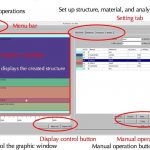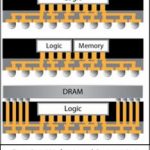When I first saw emerging semiconductor IP company Flex Logix actively involved with TSMC I knew something big was coming and boy was I right. DARPA announced today that an agreement is in place with Flex Logix to develop EFLX eFPGA technology on TSMC 16FFC for use by companies or Government agencies designing chips for the US Government. Wow! GO DARPA!
“Embedded FPGA technology is a game changer in the chip design process and we are pleased to be working with DARPA,” said Geoff Tate, CEO and co-founder of Flex Logix. “Chip development costs and lead times keep increasing and the ability to reconfigure RTL at any time can eliminate expensive chip spins, enable one chip to address many customers and applications, and extend the life of chips and systems. As a result, designers can easily keep up with changing standards and customer requirements.”
Digging a little deeper you will find that this announcement is tied to the DARPA Microsystems Technology Office (MTO) and specifically the Craft Project:
It can cost up to $100 million and take more than two years for a large team of engineers to design custom integrated circuits for specific tasks, such as synchronizing the activity of unmanned aerial vehicles or the real-time conversion of raw radar data into tactically useful 3-D imagery. This is why Defense Department engineers often turn to inexpensive and readily available general-purpose circuits, and then rely on software to make those circuits run the specialized operations they need. This practice can speed up design and implementation, but it also results in the deployment of unnecessary and power-hungry circuitry. And that, in turn, can lead to technology that requires more power than can be practically supplied on small flying platforms or on warfighters already burdened by too much battery weight.
The Circuit Realization at Faster Timescales (CRAFT) program seeks to shorten the design cycle for custom integrated circuits to months rather than years;devise design frameworks that can be readily recast when next-generation fabrication plants come on line; and create a repository of innovations so that methods, documentation, and intellectual property can be repurposed, rather than reinvented, with each design and fabrication cycle. This novel, less expensive design paradigm also could help diversify the innovation ecosystem by making it practical for small design teams to take on complex custom circuit development challenges that are out of their reach today.
Reducing the time and cost for designing and procuring custom, high-efficiency integrated circuits, should drive more of those in the DoD technology community toward best commercial fabrication and design practices. A primary payoff would be a versatile development environment in which engineers and designers make decisions based on the best technical solutions for the systems they are building, instead of worrying about circuit design delays or costs.
The program manager on Craft is Dr. Limton Salmon who came to DARPA from both sides of the semiconductor industry. He spent 15 years in executive roles directing development of CMOS technology from the 130nm through the 7nm node at GlobalFoundries, Texas Instruments and Advanced Micro Devices. Prior to that Dr. Salmon was an academic at Case Western Reserve University and Brigham Young University.
We have been covering FlexLogix on SemiWiki for 12 months now and have a dozen articles on different aspects of the technology and company. The SemiWiki Flex Logix landing page is HERE.
Congratulations to the hard working people at DARPA, Flex Logix, and TSMC, absolutely.
About Flex Logix
Flex Logix, founded in March 2014, provides solutions for reconfigurable RTL in chip and system designs using embedded FPGA IP cores and software. The company’s technology platform delivers significant customer benefits by dramatically reducing design and manufacturing risks, accelerating technology roadmaps, and bringing greater flexibility to customers’ hardware. Flex Logix recently secured $7.4 million of venture backed capital. It is headquartered in Mountain View, California and has sales rep offices in China, Europe, Israel, Taiwan and Texas. More information can be obtained at http://www.flex-logix.com or follow on Twitter at @efpga.




